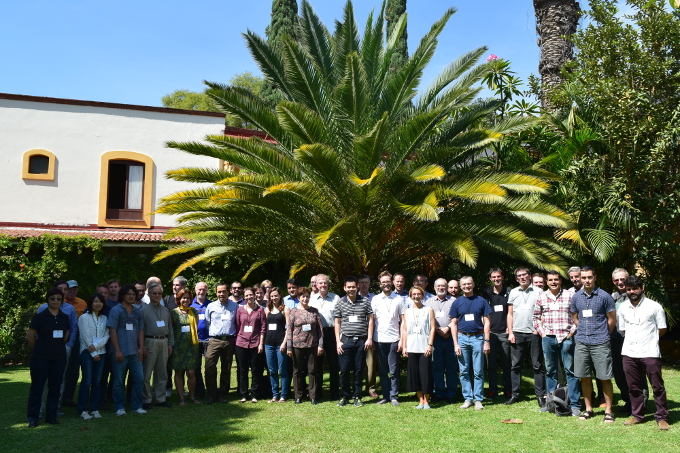Stable Processes (16w5123)
Organizers
Juan Carlos Pardo (Centro de Investigacion en Matematicas)
Davar Khoshnevisan (The University of Utah)
Alexey Kuznetsov (York University)
Andreas Kyprianou (University of Bath)
Description
The Casa Matemática Oaxaca (CMO) will host the "Stable Processes" workshop from November 6th to November 11th, 2016.
Brownian motion is probably the most popular mathematical mode of a randomly evolving trajectory which incorporates path continuity and scaling invariance (i.e. the behaviour on small-time scales is identical to the behaviour on large-time scales). Mathematicians and scientists have used it for decades in models of financial assets, biological populations, signal processing and indeed many other areas where a model is needed with dynamic random noise possessing an inherent fractal structure. However, Brownian motion moves by creeping along in a continuous way, whereas in reality our models should allow for jumps or shocks. Think of the recent stock market crashes, ecological catastrophes with the attendant dramatic changes in population, or the spike in mobile networks caused by a natural disaster -- changes can be sudden and unpredictable. A natural alternative to Brownian motion, which allows the possibility of jumps, but nonetheless preserves the property of scale invariance, is the so-called stable process. In November 2016, mathematicians will gather in Banff International Research Station station Oaxaca to discuss new directions in the research of random models which have, at their heart, driving randomness coming from a stable process.
The Casa Matemática Oaxaca (CMO) in Mexico, and the Banff International Research Station for Mathematical Innovation and Discovery (BIRS) in Banff, are collaborative Canada-US-Mexico ventures that provide an environment for creative interaction as well as the exchange of ideas, knowledge, and methods within the Mathematical Sciences, with related disciplines and with industry.
The research station in Banff is supported by Canada's Natural Science and Engineering Research Council (NSERC), the U.S. National Science Foundation (NSF), Alberta's Advanced Education and Technology, and Mexico's Consejo Nacional de Ciencia y Tecnología (CONACYT). The research station in Oaxaca is funded by CONACYT.






